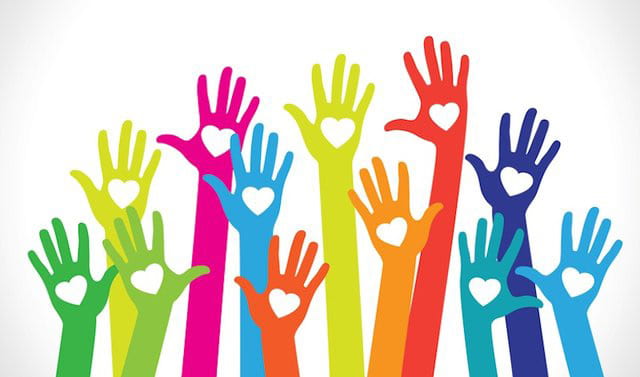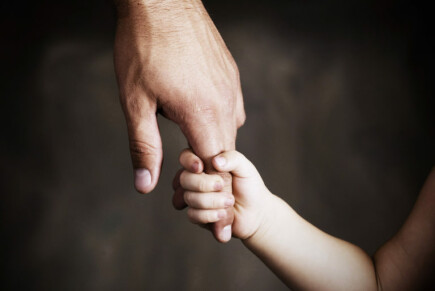
Si të organizohet një fushatë donacionesh për trajtimin e rabdomiosarkomës alveolare?
Organizimi i një fushate për mbledhjen e fondeve për trajtimin e rabdomiosarkomës alveolare është një hap i rëndësishëm në mbledhjen e fondeve që mund të shpëtojnë jetë. Rabdomiosarkoma alveolare është një lloj kanceri agresiv që kërkon trajtim intensiv dhe afatgjatë, duke përfshirë kimioterapinë, kirurgjinë dhe rehabilitimin. Këto trajtime shpesh janë të lodhshme financiarisht dhe është thelbësore të mobilizohen burimet për të mbështetur pacientët dhe familjet e tyre. Përmes një fushate të organizuar siç duhet për mbledhjen e fondeve, ne mund të ofrojmë mbështetjen e nevojshme, të përqendrojmë vëmendjen e publikut te kauza dhe të tërheqim donatorë për të ndihmuar në këtë kohë kritike.
Çfarë është rabdomiosarkoma alveolare?
Rabdomiosarkoma alveolare është një formë e rrallë dhe agresive e kancerit që lind në indet muskulore. Ky lloj sarkome zakonisht zhvillohet në indet e buta si muskujt, por mund të prekë edhe zona të tjera si mushkëritë, fshikëzën ose traktin tretës. Termi "alveolar" vjen nga struktura specifike mikroskopike e tumorit, e cila i ngjan alveolave në mushkëri.
Ky lloj kanceri është më i zakonshëm tek fëmijët dhe të rinjtë, por mund të ndodhë edhe në moshë madhore. Rabdomiosarkoma alveolare është veçanërisht e rrezikshme sepse karakterizohet nga rritje e shpejtë dhe një tendencë për t'u përhapur në organe të tjera si mushkëritë dhe kockat.
Simptomat kryesore të sëmundjes përfshijnë dhimbje në zonën e prekur, ënjtje dhe pamundësi për të lëvizur normalisht ose për të kryer aktivitetet e përditshme. Trajtimi zakonisht përfshin një kombinim të kimioterapisë, rrezatimit dhe kirurgjisë, varësisht nga faza e sëmundjes dhe vendndodhja e tumorit.
Për shkak të natyrës agresive të sëmundjes dhe nevojës për terapi të zgjatur dhe të kushtueshme, pacientët e diagnostikuar me rabdomiosarkomë alveolare shpesh kanë nevojë për ndihmë financiare për të mbuluar kostot e trajtimit dhe rehabilitimit.
Simptomat që tregojnë praninë e rabdomiosarkomës alveolare
Simptomat e rabdomiosarkomës alveolare mund të ndryshojnë në varësi të vendndodhjes së tumorit, por disa shenja të zakonshme përfshijnë:
-
Ënjtje ose gungë - Simptoma më e zakonshme është prania e një njolle të fryrë papritur ose një gunge të dhimbshme në indin muskulor që mund të vihet re lehtësisht nën lëkurë.
-
Dhimbje në zonën e prekur - Shpesh përjetohet dhimbje ose shqetësim në muskuj ose nyje, varësisht nga vendndodhja e tumorit. Kjo dhimbje mund të jetë akute ose kronike.
-
Ndryshime në lëvizje - Me një tumor në zonën e muskujve ose të kyçeve, mund të ketë lëvizshmëri të kufizuar, vështirësi në ecje ose në kryerjen e aktiviteteve të zakonshme fizike.
-
Pamundësia për të marrë frymë normalisht (nëse mushkëritë janë të prekura) - Nëse tumori ndodhet pranë mushkërive, mund të ketë vështirësi në frymëmarrje, kollë ose dhimbje në gjoks.
-
Pamundësia për të zbrazur fshikëzën ose organe të tjera - Nëse preken trakti urinar ose organe të tjera të brendshme, mund të ketë problem me urinimin ose simptoma të tjera të tretjes ose urinës.
-
Humbje peshe dhe lodhje - Në fazat e avancuara, pacientët mund të përjetojnë humbje peshe të pashpjegueshme, lodhje dhe keqtrajtim të përgjithshëm, gjë që është e zakonshme me sëmundjet malinje.
-
Metastaza - Nëse tumori përhapet në pjesë të tjera të trupit, mund të shfaqen simptoma të reja që lidhen me ato organe (për shembull, kollë për metastazat në mushkëri ose dhimbje kockash për metastazat në kocka).
Këto simptoma nuk janë specifike për rabdomiosarkomën alveolare dhe mund të shoqërohen me gjendje të tjera. Prandaj, është e rëndësishme të kërkoni këshilla mjekësore për diagnozë dhe trajtim të duhur nëse shfaqet ndonjë nga këto shenja.
Shkaqet e rabdomiosarkomës alveolare
Shkaqet e rabdomiosarkomës alveolare nuk janë kuptuar plotësisht, por ka disa faktorë që mund të rrisin rrezikun e zhvillimit të kësaj sëmundjeje:
-
Mutacionet gjenetike - Rabdomiosarkoma alveolare shoqërohet me anomali të caktuara gjenetike. Për shembull, mund të ketë ndryshime në gjenet që kontrollojnë rritjen dhe ndarjen e qelizave që shoqërohen me këtë tumor. Këto mutacione mund të shkaktojnë ndarje të pakontrolluar të qelizave, duke çuar në zhvillimin e kancerit.
-
Trashëgimia - Në disa raste, rabdomiosarkomat mund të jenë të trashëgueshme. Një shembull i një sindrome të tillë është sindroma Li-Fraumeni, në të cilën ekziston një rrezik në rritje për zhvillimin e llojeve të ndryshme të kancerit, përfshirë rabdomiosarkomën.
-
Terapia e mëparshme me rrezatim - Fëmijët ose të rriturit që kanë pasur terapi me rrezatim për të trajtuar sëmundje të tjera kanë një rrezik më të lartë për të zhvilluar rabdomiosarkomë alveolare. Kjo për shkak se rrezatimi mund të dëmtojë qelizat dhe të shkaktojë mutacione që çojnë në kancer.
-
Disa sindroma kongjenitale - Disa sindroma gjenetike kongjenitale, të tilla si sindroma Neumann-Pick, sindroma Bloom ose sindroma Usher, shoqërohen me një rrezik më të lartë të zhvillimit të rabdomiosarkomës.
-
Mosha - Rabdomiosarkoma alveolare është më e zakonshme tek fëmijët dhe të rriturit e rinj. Mosha mesatare e diagnozës është rreth 10 vjeç, por mund të zhvillohet edhe në një moshë më të pjekur.
-
Faktorët mjedisorë dhe të jashtëm - Ka spekulime se ndotësit ose kimikatet mjedisore mund të luajnë gjithashtu një rol në zhvillimin e rabdomiosarkomës, por kërkimet e nevojshme nuk janë ende të mjaftueshme për të konfirmuar këtë hipotezë.
Pavarësisht pranisë së këtyre faktorëve, është e rëndësishme të theksohet se rabdomiosarkoma alveolare shpesh zhvillohet pa një shkak të qartë.
A është e shërueshme rabdomiosarkoma alveolare?
Rabdomiosarkoma alveolare mund të trajtohet, por suksesi i trajtimit varet nga një numër faktorësh, siç janë faza e sëmundjes, mosha e pacientit, vendndodhja e tumorit dhe përgjigja ndaj terapisë. Trajtimi i këtij lloji agresiv të kancerit është kompleks dhe përfshin qasje të ndryshme:
-
Kirurgjia: Nëse tumori është i lokalizuar dhe nuk është përhapur, kirurgjia për ta hequr atë mund të jetë efektive. Megjithatë, për shkak të vendndodhjes së tumorit në muskuj dhe afërsisë së tij me organet jetësore, kirurgjia mund të jetë mjaft e ndërlikuar.
-
Kimioterapia: Ky është trajtimi kryesor për rabdomiosarkomën, duke përdorur ilaçe të fuqishme që sulmojnë qelizat kancerogjene dhe i pengojnë ato të ndahen. Kimioterapia shpesh kombinohet me terapi të tjera për të zvogëluar rrezikun e përsëritjes dhe për të trajtuar metastazat.
-
Radioterapia: Radioterapia mund të përdoret për të trajtuar tumoret që nuk mund të hiqen plotësisht me ndërhyrje kirurgjikale. Përdoret gjithashtu për të shkatërruar qelizat kancerogjene në zonat ku tumori mund të jetë përhapur dhe metastazuar.
-
Imunoterapia: Në disa raste, imunoterapia përdoret për të stimuluar sistemin imunitar për të njohur dhe shkatërruar qelizat kancerogjene. Ky trajtim zbatohet në varësi të llojit të qelizave kancerogjene dhe përgjigjes së trupit ndaj terapisë.
-
Kujdes mbështetës: Pacientët që i nënshtrohen kimioterapisë ose radioterapisë mund të kenë nevojë për kujdes mbështetës për të menaxhuar efektet anësore si dhimbja, lodhja dhe infeksionet.
Prognoza dhe shanset për trajtim të suksesshëm varen nga diagnoza e hershme dhe nëse qelizat kancerogjene janë të kufizuara në zonën origjinale apo janë përhapur në organe të tjera. Edhe pse rabdomiosarkoma alveolare është një kancer agresiv, me qasjet moderne të trajtimit, shumë pacientë janë në gjendje ta kapërcejnë sëmundjen, veçanërisht kur ajo zbulohet herët.
Sa kushton trajtimi i rabdomiosarkomës alveolare?
Kostoja e trajtimit për rabdomiosarkomën alveolare mund të ndryshojë ndjeshëm në varësi të disa faktorëve, duke përfshirë:
-
Stadi i sëmundjes: Trajtimi është dukshëm më i shtrenjtë në fazat e avancuara të kancerit, veçanërisht kur tumori ka metastazuar në pjesë të tjera të trupit. Trajtimi në këtë rast shpesh kërkon një kombinim të kimioterapisë, radioterapisë dhe, në disa raste, imunoterapisë, gjë që rrit kostot.
-
Lloji dhe kohëzgjatja e trajtimit: Kimioterapia dhe radioterapia janë trajtimet kryesore për rabdomiosarkomën. Kostoja e kimioterapisë mund të ndryshojë në varësi të barnave të përdorura dhe kohëzgjatjes së trajtimit. Radioterapia gjithashtu mund të jetë e shtrenjtë, veçanërisht nëse pacienti ka nevojë për seanca të shumëfishta.
-
Vendndodhja e trajtimit: Në varësi të vendit dhe sistemit të kujdesit shëndetësor, kostoja e trajtimit mund të ndryshojë. Në vendet me kujdes shëndetësor të subvencionuar ose publik, kostoja e trajtimit mund të jetë dukshëm më e ulët, ndërsa në institucionet private të kujdesit shëndetësor kostot mund të jenë shumë më të larta.
-
Kosto shtesë: Përveç trajtimit parësor, pacientët mund të kenë nevojë për trajtim mirëmbajtës, rehabilitim dhe medikamente për të kontrolluar efektet anësore të terapisë. Kjo mund të përfshijë qetësues dhimbjesh, antibiotikë dhe produkte të tjera mjekësore, të cilat i rrisin më tej kostot.
-
Shërbime mjekësore të specializuara: Disa pacientë mund të kenë nevojë për konsulta të specializuara me onkologë, kimioterapistë dhe specialistë të tjerë, të cilat mund të rrisin koston e përgjithshme të trajtimit.
Trajtimi i rabdomiosarkomës alveolare mund të jetë shumë i kushtueshëm, veçanërisht nëse sëmundja është në një fazë të avancuar dhe kërkon terapi afatgjatë dhe intensive.
Si mund të gjej shpejt burime financiare për trajtimin e rabdomiosarkomës alveolare?
Mbledhja në kohë e fondeve për trajtimin e rabdomiosarkomës alveolare mund të jetë jashtëzakonisht e rëndësishme për pacientët dhe familjet e tyre, pasi trajtimi i kësaj sëmundjeje agresive shpesh kërkon burime të konsiderueshme financiare. Trajtimi zakonisht është shumë i kushtueshëm, veçanërisht në fazat e avancuara të kancerit. Aftësia për të mbledhur shpejt fonde mund të jetë thelbësore në ofrimin e kujdesit të nevojshëm mjekësor.
Disa nga opsionet për gjetjen e shpejtë të burimeve financiare për trajtimin e kancerit të rabdomiosarkomës alveolare përfshijnë:
-
Grumbullim fondesh – Përdorimi i platformave si PavelAndreev.ORG për të mbledhur donacione nga një audiencë e gjerë.
-
Fushatat e donacioneve online – Nisni një fushatë në rrjetet sociale për të mbledhur fonde duke i ndarë ato me miqtë dhe të njohurit.
-
Ngjarje bamirësie – Organizimi i koncerteve, ankandeve, garave sportive, gjatë të cilave mblidhen fonde për trajtim.
-
Donacione të drejtpërdrejta nga kompanitë dhe fondacionet – Apel për bizneset dhe organizatat bamirëse që mund të ofrojnë ndihmë financiare ose materiale për pacientët.
-
Programet e Shëndetit dhe Bamirësisë – Mundësi financimi nga organizatat ose fondacionet shëndetësore që ofrojnë fonde për trajtimin e sëmundjeve të rralla.
Crowdfunding si një burim për mbledhjen e fondeve për trajtimin e rabdomiosarkomës alveolare
Grumbullimi i fondeve kolektive është një nga mënyrat më efektive dhe më të shpejta për të mbledhur fonde për trajtimin e rabdomiosarkomës alveolare. Kjo metodë u lejon njerëzve që nuk janë në gjendje të sigurojnë vetë fondet e nevojshme t'i drejtohen komunitetit për ndihmë. Përmes platformave online të grumbullimit të fondeve kolektive, siç është PavelAndreev.ORG, pacientët mund të krijojnë fushata për mbledhjen e fondeve që ndahen në rrjetet sociale dhe arrijnë një numër të madh njerëzish.
Crowdfunding arrin shpejt një audiencë globale donatorësh, të cilët mund të bëjnë një ndryshim të madh me shuma të vogla. Kjo është veçanërisht e dobishme për pacientët që nuk janë në gjendje të marrin fonde të mjaftueshme përmes kanaleve tradicionale si sigurimet ose shëndeti publik. Crowdfunding është një mënyrë e përballueshme dhe efektive për të mbledhur fonde që mund të mbulojnë kostot e trajtimit dhe procedurave mjekësore përkatëse.
Filloni një fushatë në PavelAndreev.ORG.
Pse të zgjidhni platformën PavelAndreev.ORG?
Platforma PavelAndreev.ORG është një vend ideal për të filluar një fushatë për mbledhjen e fondeve për trajtimin e sëmundjeve të rënda siç është rabdomiosarkoma alveolare. Ja pse:
-
Proces i lehtë për nisjen e fushatës – Platforma ofron një ndërfaqe intuitive që lejon nisjen e shpejtë dhe të lehtë të fushatës. Nuk kërkohen aftësi të veçanta teknike për të filluar mbledhjen e fondeve.
-
Shtrirje e gjerë – PavelAndreev.ORG ka një bazë të madhe përdoruesish dhe mundësi të mira për ndarjen e fushatave në rrjetet sociale, gjë që rrit shanset për të arritur më shumë donatorë.
-
Mbrojtja dhe Siguria – Platforma ofron metoda të besueshme donacionesh që garantojnë mbrojtjen e të dhënave personale dhe sigurinë financiare të donatorëve.
-
Mbështetje dhe këshilla – Platforma PavelAndreev.ORG ofron ndihmë në krijimin e fushatave dhe këshilla për arritjen e suksesit, gjë që është veçanërisht e dobishme për njerëzit që po fillojnë një fushatë për mbledhje fondesh për herë të parë.
-
Transparenca dhe llogaridhënia – Fushatat në platformë mund të gjurmohen lehtësisht, me donatorët që marrin përditësime të rregullta mbi progresin e trajtimit dhe mënyrën se si përdoren fondet e mbledhura.
-
Pa tarifa të fshehura – Platforma është falas për t’u përdorur dhe ngarkon vetëm tarifa transaksionesh, të cilat janë minimale.
Filloni një fushatë
-
Filloni një fushatë – Plotësoni formularin e fushatës duke dhënë informacion në lidhje me pacientin, diagnozën dhe nevojat e trajtimit.
-
Shtoni foto – Vizualizimi do t’i ndihmojë donatorët potencialë të lidhen emocionalisht me fushatën.
-
Përshkruani qëllimet dhe nevojat – Jini të qartë se për çfarë do të përdoren fondet e mbledhura dhe si do ta ndihmojnë ato pacientin.
-
Shpërndaje fushatën – Posto një link për fushatën nëpërmjet mediave sociale Facebook, Instagram, LinkedIn, X, Tik Tok dhe YouTube, emaileve dhe kanaleve të tjera për të arritur më shumë njerëz.
-
Monitoroni progresin – Përditësoni rregullisht fushatën me informacione të reja dhe falënderime për donatorët për të ruajtur interesin dhe mbështetjen.
Nisni fushatën sot dhe filloni të mbledhni fonde që mund të bëjnë një ndryshim të rëndësishëm në jetën e pacientëve dhe familjeve të tyre!

Cili është çmimi i përafërt për botimin e një libri?
Nëse qëllimi juaj kryesor është thjesht të printoni librin tuaj, përdorimi i platformave të vetë-botimit falas mund të jetë zgjidhja e duhur. Vetë shkrimi është shpërblimi më i madh për shumë njerëz dhe botimi mund të jetë thjesht një formalitet. Megjithatë, nëse doni të shesni librin tuaj dhe të arrini një audiencë të gjerë, duhet të investoni në shërbime profesionale. Pa to, është e vështirë të konkurrosh me librat e botuar tradicionalisht. Fak...

Çfarë është një filantrop dhe filantropi?
Çdokush mund të jetë një filantrop dhe të jetë më efektiv në ndryshimin. Ja si. Një filantrop është një person që dhuron kohë, para, përvojë, aftësi ose talent për të ndihmuar në krijimin e një bote më të mirë. Çdokush mund të jetë një filantrop, pavarësisht nga statusi apo pasuria neto. Çfarë është filantropia? Dramaturgu grek Eskili shpiku termin filantropi në shekullin e 5-të para Krishtit. Do të thoshte "dashuri për njerëzimin". Sot, filantro...

Çrregullimi mendor narcisist: simptomat, trajtimi dhe si mund të ndihmojmë
Shëndeti mendor po bëhet gjithnjë e më i rëndësishëm në shoqëri dhe interesi për këtë temë po rritet ndjeshëm. Sëmundjet mendore prekin një numër të madh njerëzish në mbarë botën. Një nga çrregullimet më pak të njohura të shëndetit mendor është çrregullimi i personalitetit narcisist. Çrregullimi i personalitetit narcisist është një gjendje që shpesh mbetet e padiagnostikuar, e cila çon në vuajtje edhe më të mëdha për të prekurit. Njerëzit me kët...

Si të mblidhni shpejt para për të birësuar një fëmijë
Fëmijët janë dhurata më e madhe që një person mund të marrë gjatë gjithë jetës së tij! Dhe nëse fati juaj nuk ishte aq i sjellshëm për t'ju lejuar të bëheni prindër, institucionet dhe organizatat kanë gjetur një mënyrë për t'ia dhënë këtë të drejtë kujtdo që ka zemër dhe shpirt për këtë. Sipas statistikave nga anketat e kryera në vitin 2018. Shifra prej 430 mijë fëmijë funksionon në favor të familjeve kujdestare. Për fëmijët e birësuar, shtëpia...

